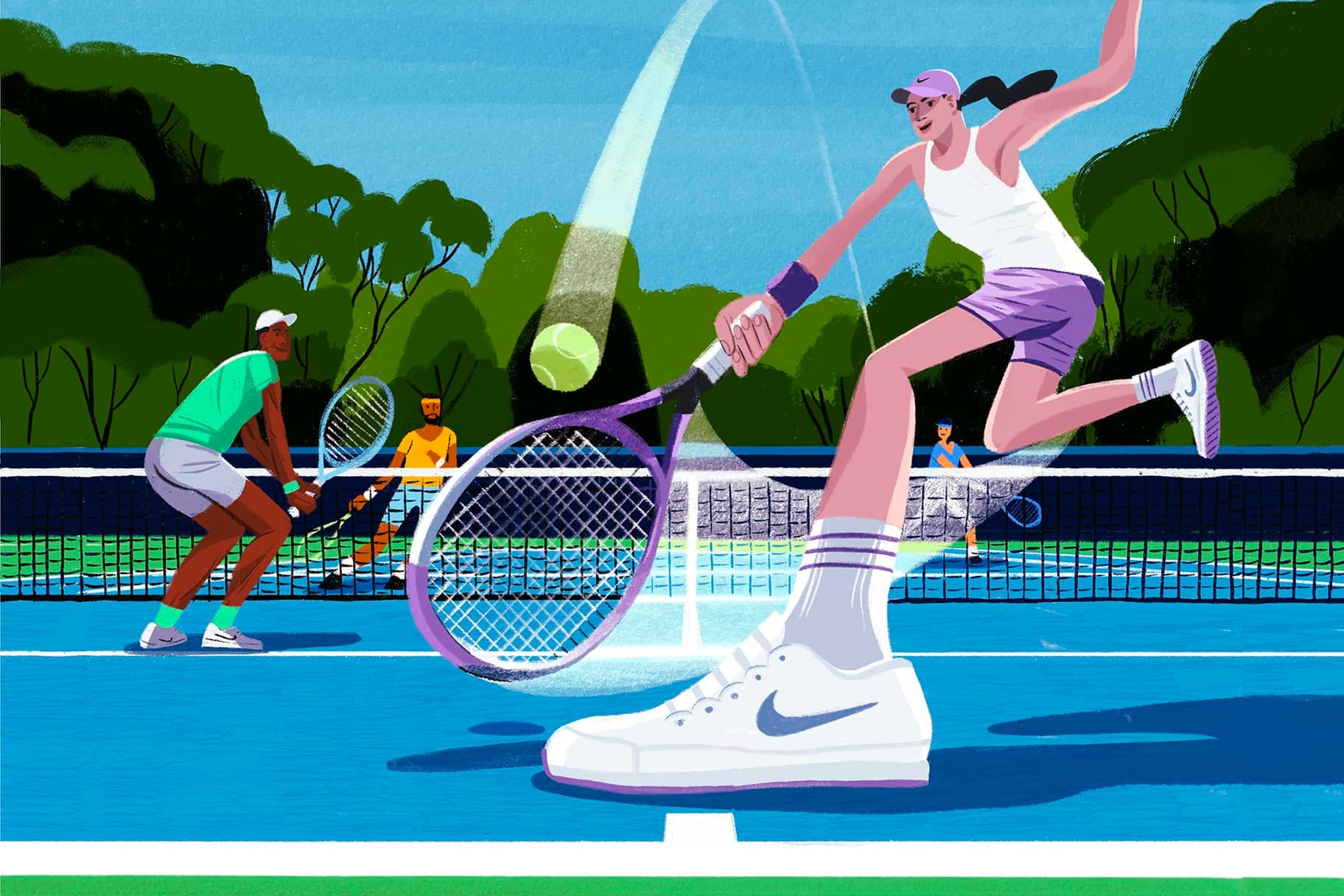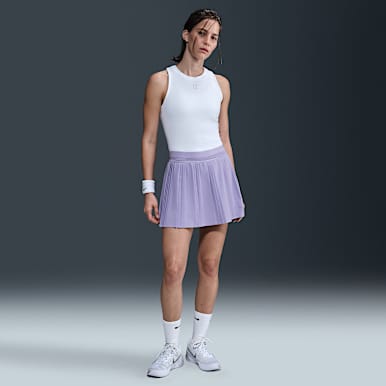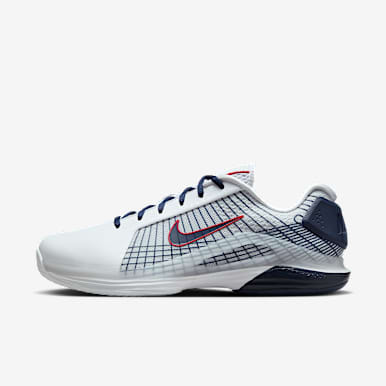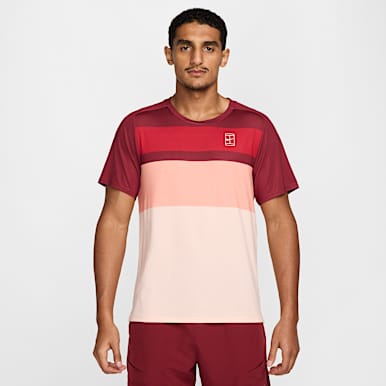Doubles Tennis 101: A Beginner’s Guide to Doubles Tennis Rules, Tips and Strategies
Sports & Activity
Two tennis coaches provide tips on how to play, strategize and score in doubles tennis.

As the name suggests, doubles tennis involves each tennis player having a partner while facing off against a pair of opponents on the other side of the net. It’s the team version of the individual game.
“That’s what brings out the fun: You’re no longer by yourself. You have someone to fall back on a little bit, to strategize with and talk between points,” said Freddy Mesmer, head coach of men’s tennis at Georgetown University.
Aside from the enjoyment of having a teammate, there are lots of factors that differentiate doubles tennis from a singles match: the size of the court, the positioning of the players, the game strategy and more. Below, learn how two-on-two tennis differs from the singles game, plus tips from coaches on how doubles tennis players can excel on the court.
(Related: Tennis Scoring for Beginners: A Basic Explainer on How to Win a Match)
The Court in Doubles Tennis
Besides the addition of two players, one of the most noticeable differences between singles and doubles tennis is the size of the court. On a standard tennis court, there are two stripes that run the length of the court on either side called the “doubles alleys.”

Each of these alleys is 4.6 feet (1.37 meters) wide, and this space is considered in-bounds in doubles tennis. Even though singles tennis is played on the same courts, this space is considered out of bounds for singles matches. With a doubles alley on each side of the court, this makes the total court size 9.2 feet (2.72 meters) wider for doubles play than for singles play.
For tennis players accustomed to playing singles, the extra court area can be an adjustment when they play a doubles match, said Maciek Sykut, associate head coach of men’s tennis at Duke University and a former professional tennis player.
If doubles players put too much emphasis on defending the alleys on the sides, he said, their partners wind up having to defend more of the center of the court, in addition to the alley on their side.
Even though the court is bigger in doubles tennis, having four players on the court means that each player has a smaller area of the court to cover. According to Sykut, that generally means doubles tennis requires less running. Depending on what a player wants to get out of their tennis game, less running might be appealing.
(Related: 8 Essentials to Complete Any Tennis Outfit)
How Does Serving Work in Doubles Tennis?
Just like in singles tennis, one player serves for an entire game of doubles tennis. (Note: There are typically six games within a tennis set, and two or three sets make up a match.) On each serve, the serving player stands behind the baseline and must serve the ball over the net into the “service box” on the other side of the court.

If the serving player is positioned on the left side of the court, their serve must land in the opposite (right side) service box on the other side of the net. If the serve misses the service box, it’s a fault, and the serving player gets another chance. If the second serve is also a fault, it’s a “double fault,” and the serving team loses the point.
After a successful serve, the point is played: The two pairs hit the ball back and forth over the net. The point ends if the ball bounces twice on one side, fails to make it over the net or lands outside the court’s boundary lines. Then the next point starts.
On the next serve, the same serving player will now serve from the right side of the court and aim their serve at the left service box on their opponent’s side of the net. The serving player continues alternating in this way until the game ends.
In the next game, the other team serves, just as in singles tennis. But there are unique serving and returning rules for doubles.
For each game, teams must alternate which player serves. For instance, on a doubles team of players A and B, player A serves in the first game of a set. One of their opponents serves in game 2. In game 3, player B will serve. This order continues throughout the set.
In the next set, the team could opt to switch, having player B serve game 1 and player A serve game 3.
The serving player’s partner can stand anywhere they want on their team’s side of the court. In many cases, the partner will play in their own service box: If the server is positioned on the left side of the court, their partner will be positioned in the right service box and vice versa.
There’s another strategy, called Australian formation, that entails the server’s partner standing in the service box in front of the serving player. If the serving player is hitting from the left baseline, the partner in this formation would be standing in the left side service box.
Some reasons players might use this formation include:
- For a right-handed server serving from the left side of the court, this formation can be used to encourage the returner to hit the ball to the server’s forehand side — an advantage if the server has a stronger forehand than backhand and wants to play to their strengths.
- If the server’s partner is right-handed and has a strong forehand volley, the Australian formation can also help when serving from this side, because the partner’s forehand (instead of their backhand) is in the center of the court.
- If the returning team is in a groove, changing up the formation may throw them off and help the serving team score.
How Does Returning Work in Doubles Tennis?
While the serving player switches sides on every point, the returning team must stay on the same left-right side of the court on each serve of the game. On the first point of the game, if the server is hitting from the service line on the left side of the court, player Y from the opposing team will be on the right side of the court. There, they must hit the return shot to the other side of the court.

On the next point, the serving team switches sides, so player A is serving from their right baseline. However, the opponents stay put: Now, player X becomes the returner.

After the initial return, players on the returning team can go anywhere on the court on their side of the net.
Changeovers
In both singles and doubles tennis, teams switch sides of the net after every odd-numbered game of a set. If a team has been playing on one side of the net in game 1, they’ll change over to the other side for games 2 and 3. After game 3, they’ll return to their original side of the net.
This is called a “changeover” and is accompanied by a short break — usually 90 seconds.
How to Keep Score in Doubles Tennis
Games of doubles tennis are scored in the same way as singles tennis. The game begins with an equal score, 0-0. In tennis, the “zero” score is called “love.” After that, points are scored as follows:
- First point: 15
- Second point: 30
- Third point: 40
- Fourth point: game
A score of 40-40 (or a tie at 3 points each) is called “deuce.” After deuce, the next player or team who scores has an “advantage” (ad). If that team scores again, they win the game. If they lose that point, it’s tied again, and the score is once again deuce. The game continues until one side wins 2 points in a row after deuce.
Many tournaments, including National Collegiate Athletics Association (NCAA) play, use “no-ad” scoring for doubles. In this scoring format, doubles partners don’t have to win by 2 points in order to win the game. In a “no-ad” game, if the score is 40-40 (still called deuce), the next point wins.
Are There Tiebreakers in Doubles Tennis?
Most sets in a tennis match are played until one side wins six games. If you see a tennis score that shows a set as “6-2,” the winning side won six games and the losing side won two.
In many cases, the set must be won by two games, so if the set score is 6-5, another game is played. If the team that’s leading wins, the set ends at 7-5. But if the team with five wins is victorious in the 6-5 game, the set is tied at 6-6; in many tournaments, this triggers a tiebreaker.
A tiebreak game in tennis is scored up to 7 points, but points are counted by ones instead of the standard scoring system. In a tiebreak game, the winner of the first point is leading 1-0 instead of 15-0. The game continues until one team has at least 7 points and is winning by 2 points or more.
Tiebreakers also have a different serving format than regular games. Instead of one player serving for the entire game, teams switch off. The first point is served by the team who was meant to serve the next game.
After the first point, the opposing team serves 2 points, then the teams switch after every 2 points until the tiebreaker is complete. Each time the serving team switches, the serving player on the team switches, too.
In a game of team AB versus team XY, the serving order would be as follows:
- Point 1: Player A serves.
- Points 2-3: Player X serves.
- Points 4-5: Player B serves.
- Points 6-7: Player Y serves.
- Points 8-9: Player A serves.
- Points 10-11: Player X serves
Teams switch sides of the court after every 6 points. This continues until the tiebreak ends.
Third-Set Tiebreak
In some doubles matches, teams only play two full sets. If each team wins one set and the match is tied 1-1, they play a tiebreak game in lieu of a third set.
In these cases, the tiebreak game is played to 10 instead of 7. Teams must still win by 2, and all the other rules — including the serving order — are the same.
What Makes a Great Doubles Player?
On the skills side, Mesmer said, “The three shots that are most important in doubles are the serve, the return and the volley. When somebody’s got a big serve, it makes it hard to return the ball past the [server’s partner,] who’s guarding that return.”
A player with good return skills, he said, can hit that big serve back over the net under control and past the opponent who is close to the net. If the ball goes to the player at the net, that player can hit a volley (a shot that’s hit out of the air as the ball flies over the net) instead of letting the ball bounce first.
Volleys can be challenging to return and defend because they happen so quickly — instead of seeing the ball fly all the way from the baseline back over the net, players reacting to a volley need to think (and hit) fast.
Volleys are important in both singles and doubles tennis, but they’re crucial in doubles, Mesmer said, because one partner on each team is almost always at the net.
“If you’re playing good doubles, you’re finishing in the front court at the net, and you’re not playing from the baseline a ton,” Mesmer said. Singles players, on the other hand, can stay at the baseline and play lots of ground strokes.
But because one doubles partner almost always starts in the front court — the area inside the service boxes closest to the net — players need to be ready to hit and defend lots of volleys. Therefore, strong doubles players have great volley skills — quick reflexes and decision making, as well as expert racket control.
Another mental and social skill that helps players excel at doubles is communication, both coaches said.
“Without a doubt, communication and interpersonal skills are among the most important pieces,” Sykut said. Unlike in singles, where a player can silently run from one spot to the next, “now you have another player on the court that you’re co-managing. You’re calling plays. It’s a team sport now, with two people out there working together,” he said.
Doubles partners can also help cover for one another, with one partner stepping up their game when the other is struggling, Mesmer said.
Words by Greg Presto




















